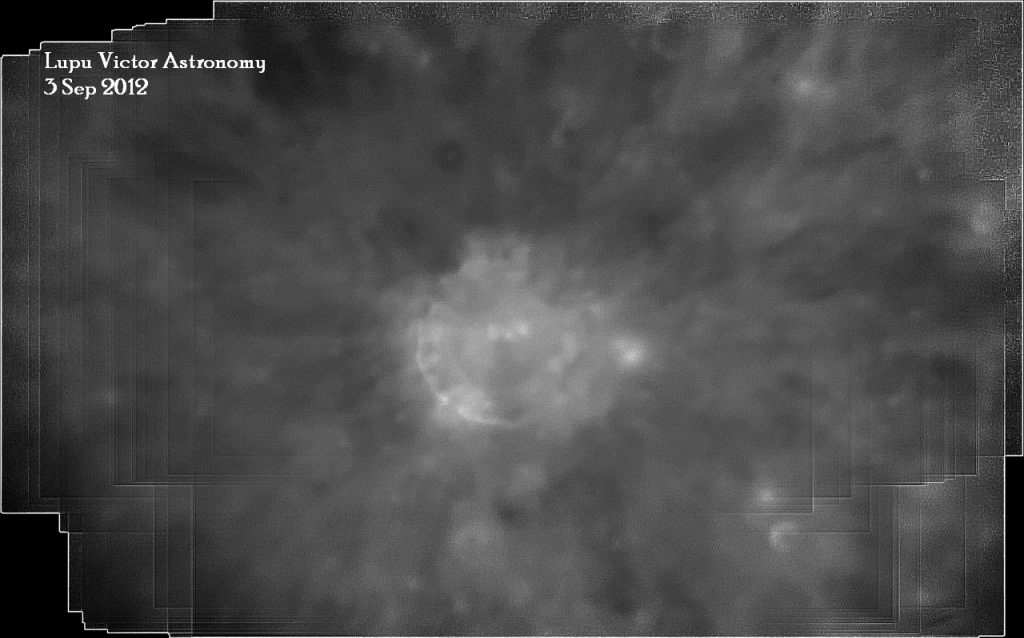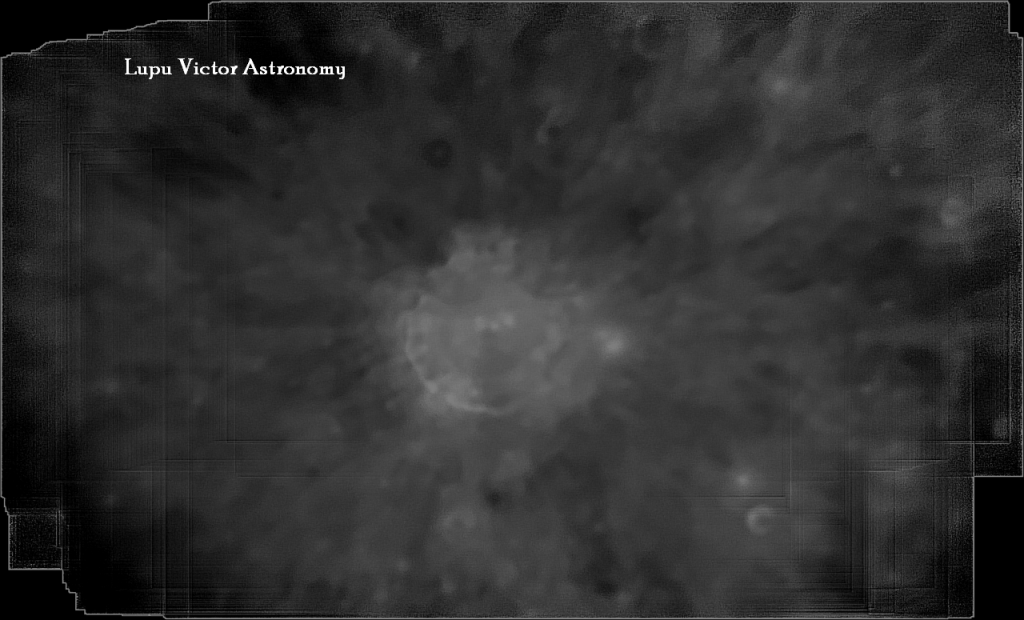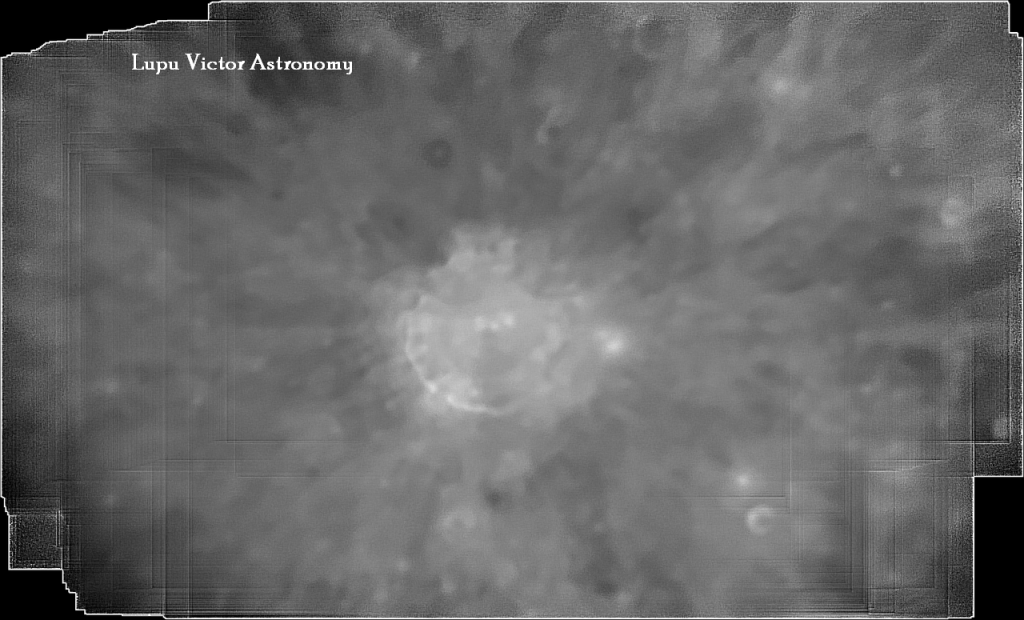 |
| 43 frames at 85% best quality |
 |
| 363 frames at 85% best quality |
 |
| 363 frames at 85% best quality |
 |
| 363 frames at 85% best quality |
It is likely that this crater rays once have been more whitish , as was proven that they become paler with age. Rays starting from craters, are the material ejected upon impact that produce the crater, carried by the solar wind around that crater.
Notice the rays that start from Copernicus crater. These are not as common as on the other craters, like Tycho for example. Copernicus's rays are "tangled" together, disordered. My guess is that this is due to the kind of soil that has been on the impact, which is a low area on a lava basin, near Mare Insularum, unlike the Tycho, whose impact has been on high mountainous areas, . Tycho has an intense albedo ray system, (which means that it is younger than the crater Copernicus), and its rays are like swords, distinct and beautifully arranged. These images are processing in Registax.
The last 3 pictures, are actually one picture, formed of 363 video frames, on which I played with contrasts.
Below we can see the Moon as it was that night. And this is a process in Registax program too.
Age of the Moon: 17 days
Phase: 90% (0% = New, 100% = Full)
Distance: 399,796 km
Optics: Celestron C8-Newtonian telescope, 20mm Plossl, 2x Barlow
Mount: CG5 (EQ5)
Camera: Sony CX130
Filter: no
Date: 03/09/2012
Location: Baia Mare, Romania
Processing: Registax, FastStone Image Viewer




 Tuesday, May 07, 2013
Tuesday, May 07, 2013
 Unknown
Unknown



 Posted in:
Posted in: 


0 comments:
Post a Comment